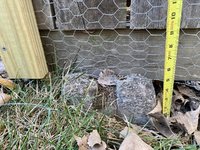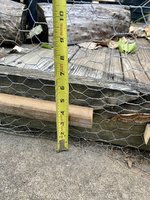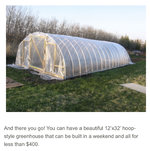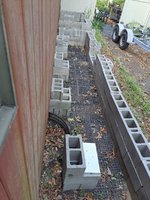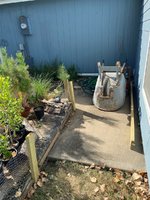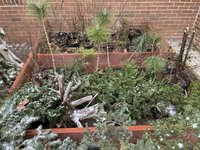hemmy
Omono
This is my first winter in over a decade and the first with a serious amount of trees that all lived out year round in SoCal.
I’m looking for ideas and feedback on a DIY cold frame for overwintering JBP, JRP, and tridents in zone 6a. I have a space that already has a 12x12 wooden plaform with picket fence on north side a former hot tub platform. It is on north side of house with shielding by house on west and partially on south. I’m thinking about a PVC or metal conduit hoop frame covered inside and out with plastic sheeting. Then some type of wood frame with sheeting or polycarbonate sheets on the ends. I’d like the center to be at least 6ft tall. With our wild temp swings in winter, I’d expect to have to cover with shade cloth. Budget is ~$600 and I’d like to convert it to partial shade structure in the summer.
Challenges are that the current platform is a made from a treated 2’x6’ box frame resting on a concrete slab on one corner and concrete blocks on the other. It is not anchored and is a couple inches off the ground. It is also not level. I do have a nearby outdoor outlet to power fans or heating cables.
My original thought was a gravel bed floor with heating cables to keep the bed and pots above 36F. I’d like to avoid repeated freeze thaw cycles on my substrate and pots. It doesn’t get cold enough here to have snow for insulation. I am already battling squirrels, rabbits, mice and rats so it needs to be tight and I figured on setting traps and wrapping trunks.
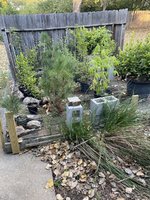
I’m looking for ideas and feedback on a DIY cold frame for overwintering JBP, JRP, and tridents in zone 6a. I have a space that already has a 12x12 wooden plaform with picket fence on north side a former hot tub platform. It is on north side of house with shielding by house on west and partially on south. I’m thinking about a PVC or metal conduit hoop frame covered inside and out with plastic sheeting. Then some type of wood frame with sheeting or polycarbonate sheets on the ends. I’d like the center to be at least 6ft tall. With our wild temp swings in winter, I’d expect to have to cover with shade cloth. Budget is ~$600 and I’d like to convert it to partial shade structure in the summer.
Challenges are that the current platform is a made from a treated 2’x6’ box frame resting on a concrete slab on one corner and concrete blocks on the other. It is not anchored and is a couple inches off the ground. It is also not level. I do have a nearby outdoor outlet to power fans or heating cables.
My original thought was a gravel bed floor with heating cables to keep the bed and pots above 36F. I’d like to avoid repeated freeze thaw cycles on my substrate and pots. It doesn’t get cold enough here to have snow for insulation. I am already battling squirrels, rabbits, mice and rats so it needs to be tight and I figured on setting traps and wrapping trunks.


